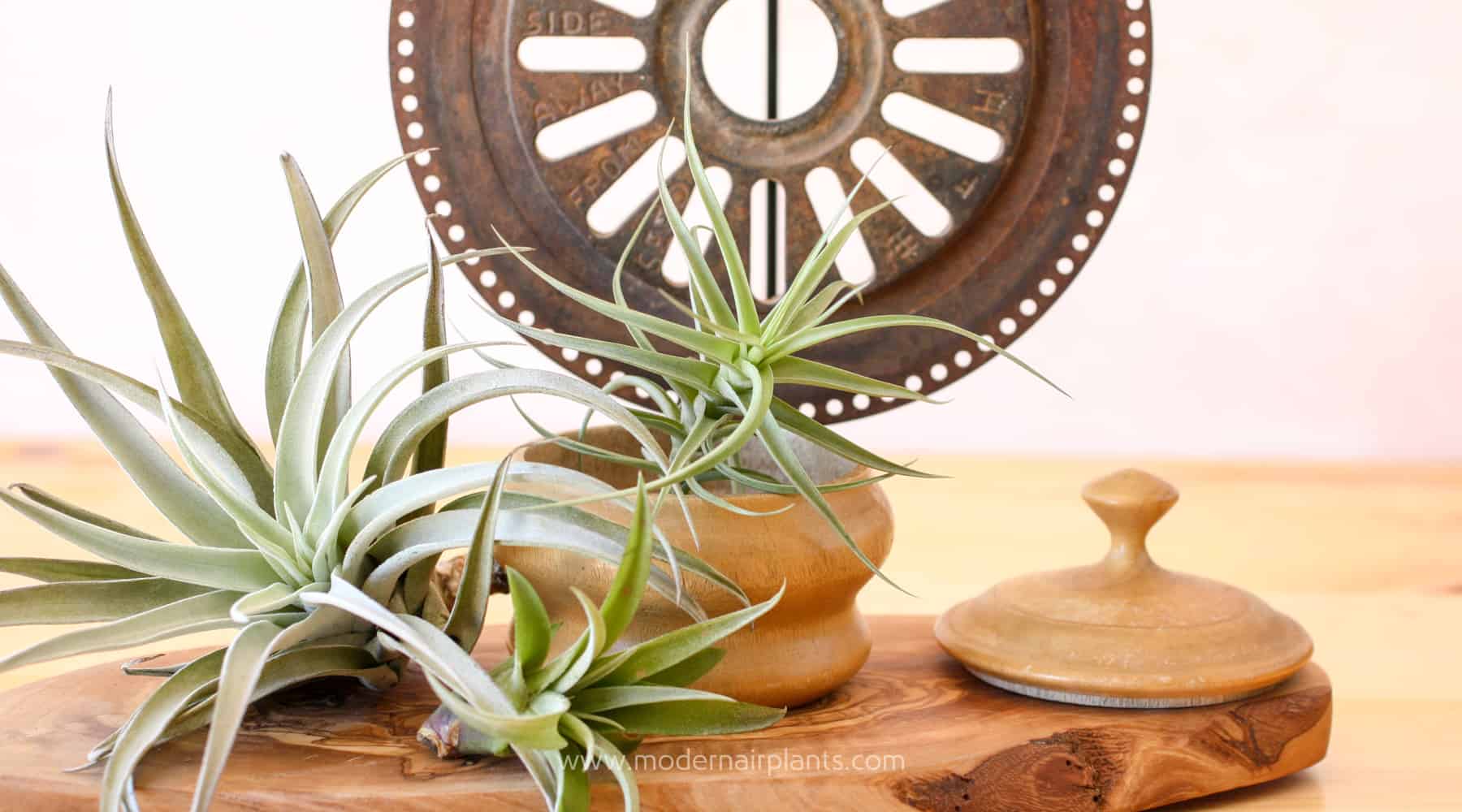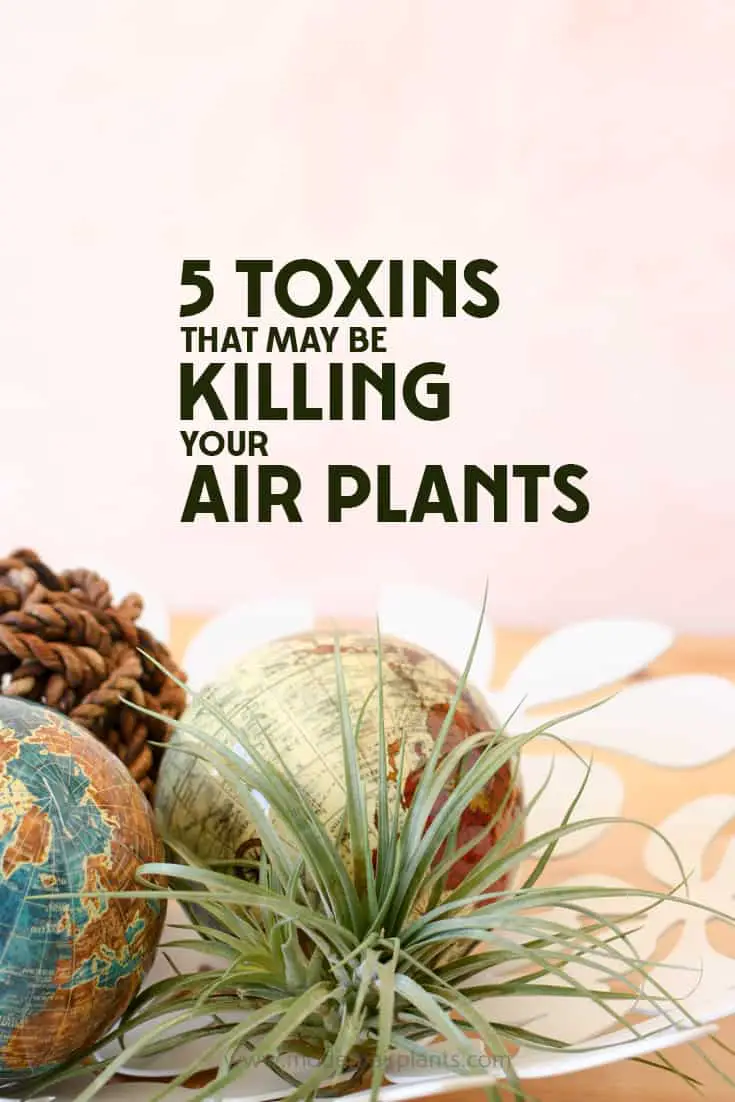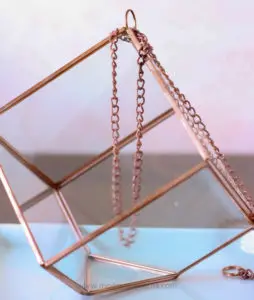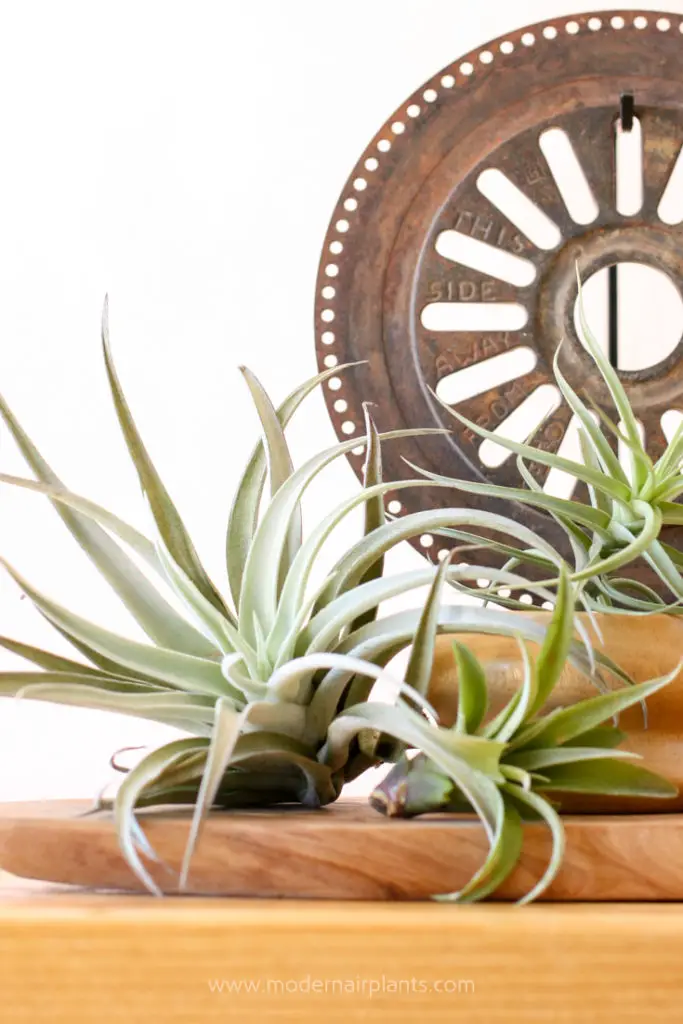
A heads up on air plant toxins
You’ve probably heard the worn-out excuse: my dog ate my homework. But, what about: my cat ate my air plant? Find out if air plants are toxic, and learn about things that are toxic to air plants. Although these toxins are common, thankfully, they are avoidable.
This post may contain affiliate links, and I love all the products I promote.
My Cat Ate My Air Plant
First off, thankfully, no, air plants are not toxic to humans or pets. So if your cat, or dog, or child, eats your air plant it will be no worse for wear.
It is far more likely that toxins may be introduced to your air plant. Here’s what the toxins are and how to avoid them.
Copper
As harmless and pretty as copper appears, it is toxic to air plants and should be avoided. Don’t use copper wire, copper plant holders or pressure-treated lumber, as the chemicals to treat the wood contain copper.

Too bad, so sad! This copper terrarium won’t be housing any air plants.
Boron, Zinc, and Urea-Nitrogen
Before using a particular fertilizer read the Guaranteed Analysis to see if boron, zinc or urea-nitrogen are included, as these elements are harmful to air plants.
While you want a fertilizer without boron, zinc or copper, air plants do need nitrogen. They just need it in a usable form. Look for non-urea nitrogen fertilizer. Fertilizers containing urea depend on bacteria in soil to convert the nitrogen into a usable form for the plants. As air plants are not rooted in soil they cannot absorb nitrogen in this form. Instead, the air plant will be harmed instead of helped.
Tip: To be on the safe side, use a fertilizer specifically formulated for tillandsias or bromeliads.
To learn more about fertilizing air plants, check out the post below.
Rust
When creating displays be advised that rust is toxic to tillandsia.

If using rusted metals, such as the industrial-style object in the background of this photo, make sure the air plants and the rust are far enough away that they don’t touch.
Now that you know which materials and fertilizers to avoid when caring for and displaying your air plants, you can avoid unnecessary air plant fatalities 🙂


